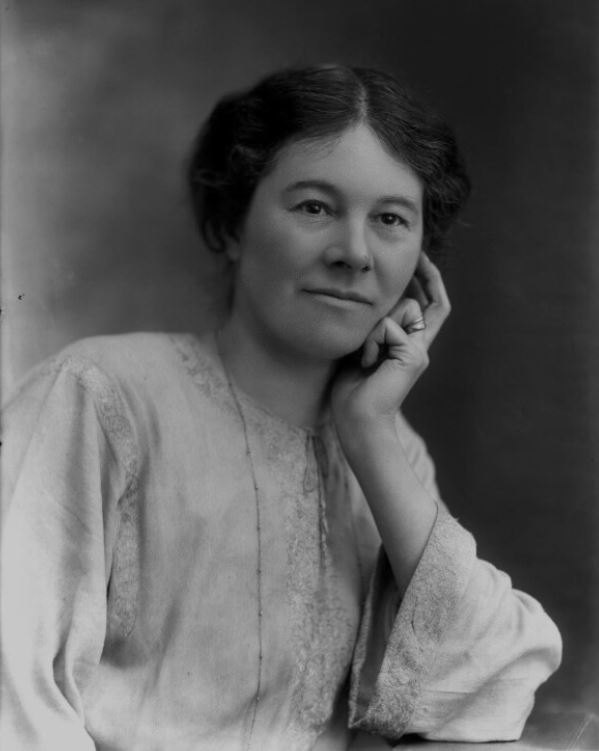Educator, economist, suffragist and founder of the National Council for the Unmarried Mother & Child (later to become known as the charity, Gingerbread).
Lettice Fisher, the eldest daughter of Sir Courtney Peregrine Ilbert came from a political family. Born 14th June 1875 in London, her father was responsible for the drafting of parliamentary bills and was later to become Clerk to the House of Commons. Her mother, Jessie, was a daughter of the Reverend Charles Bradley and her great-grandfather, another Reverend Charles Bradley was instrumental in the abolition of slavery. At the time of Lady Ilbert’s death in 1924, she was described as “one of the most remarkable political women of her time.” It was to this background of politics and campaigning that the young Lettice grew up.

Educated in London and at Somerville College, Oxford, Lettice later returned to Oxford in 1902 to teach history at St Hugh’s College. Whilst at Oxford she also taught economics to women and became an active suffragist. For two years from 1916 she was Chair of the National Union of Women’s Suffrage Societies.
It was during WW1 that Lettice became involved with the women munition workers of Sheffield. Disturbed by the increase in wartime illegitimacy, the difficulties and prejudices the women faced, as well as the higher death rates of their babies, she founded in 1918 the National Council for the Unmarried Mother & Child. Campaigning for the reform of the discriminatory Bastardy Acts and Affiliation Orders Acts, the council gave advice and assistance to single mothers. Lettice remained in her role as first chair of the council until 1950. Much later in its history the council merged to become known as the charity, Gingerbread.
Lettice Ilbert married Herbert Albert Laurens Fisher (known as HAL Fisher), her Oxford tutor in early July 1899. They had one daughter, Mary – later Mary Bennett – who became principal of St Hilda’s College, Oxford. After HAL’s untimely death in 1940, Lettice moved from Oxford to Thursley, Surrey where she died from heart failure in 1956. Her ashes are interred at New College, Oxford where HAL had been warden for many years until the time of his death.
The theme of this year’s United Nations International Women’s Day is “Women in leadership: achieving an equal future in a Covid-19 world.” I’m not qualified to write about current matters but I am quite certain that Lettice Fisher embraced the qualities that are still needed today. One hundred years ago, Lettice Fisher found that the terrible aftermaths of World War and the ‘flu epidemic which caused even greater deaths and hardship, only hardened her resolve to tackle women’s rights, prejudice and injustice. Sadly, in many places in the world, these issues are still very much outstanding.
Why my interest in Lettice Fisher? Lettice Fisher (nee Ilbert) is an ancestral cousin through our mutual descent of the Bradley family.

John, you certainly have some interesting ancestors and you write so well. My paternal grandparents had boxes of sepia photos that fascinated me as a child and I am lucky to have some copies of a few. The most interesting one is of four male generarations from my great great grandfather on his 80th birthday (born 1841), his son my great grandfather, then my grandfather and his eldest son born 1919. That boy is still alive age 101 and I have a photo of him with his son, his son’s daughter and her son. So that is 7 generations linked through him. That little boy had two brothers including my father but the name Pryke will die out in that branch due to only females having children in subsequent generations. When looking at old photos if you use a large magnifying glass the images become almost three dimensional as if you’re looking at a living person.
Changing the subject I hope to see you on Zoom for the RJS AGM.
How nice to hear from you, Norma. Old photos are fascinating and how wonderful to have a living link with so many generations. I’m quite fortunate in having several old photos too – the ones that cannot be identified are so frustrating! I’m also in a similar situation name-wise for I am the last of this male line of Shortlands. I sometimes wonder if that is why I am so enthusiastic about finding out about the family history so I can pass it on (not too sure who to!) before I’m dead and gone.
Hope to see you on Zoom but my computer is being very erratic so may not make it. I really need to get a new one!
Pingback: Grandma and The Man Who Never Was | Life in the English Cotswolds
Pingback: 2021: A Year in Review – part 1 | Life in the English Cotswolds